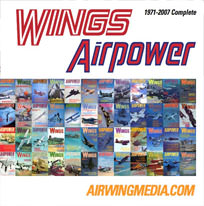With a whistle and a roar, the “Mighty Eagle,” a NASA robotic prototype lander, sailed to an altitude of 100 feet during another successful free flight Aug. 28 at NASA’s Marshall Space Flight Center in Huntsville, Ala.
During the 35-second run, the vehicle was “open loop” — navigating autonomously without the command of the onboard camera and flying on a preprogrammed flight profile. Once it reached the 100-foot mark, the “Mighty Eagle” identified a new, larger target on the ground about 100 feet away, took pictures, processed the images and safely landed.
Today’s test is part of a new series of free flights testing the robotic prototype lander’s autonomous rendezvous and capture capabilities. Testing will continue through September.
“We met our goal for this flight, which was to test the new software at triple the height of our last flight,” said Dr. Greg Chavers, “Mighty Eagle” test lead at the Marshall Center. “The higher we go, the more realistic the scenario is compared to an actual descent.”
“This test article is a vehicle system and requires a lot of team interaction,” said Jake Parton, test conductor on today’s flight. Parton is one of several young engineers gaining experience and getting guidance from senior engineers on the “Mighty Eagle” project. The test team’s ages range from 25 to 71.
“We are getting good experience in handling flight hardware and reacting to real-time conditions and anomalies,” said Parton. “Each time we test, we load propellant, launch the vehicle, fly the vehicle and land the vehicle. It’s hands-on flight experience for young engineers.”
Nicknamed the “Mighty Eagle” after one of the characters in the popular “Angry Birds” game, the vehicle is a three-legged prototype that resembles an actual flight lander design. It is 4 feet tall and 8 feet in diameter and, when fueled, weighs 700 pounds. It is fueled by 90 percent pure hydrogen peroxide and receives its commands from an onboard computer that activates its onboard thrusters to carry it to a controlled landing using a pre-programmed flight profile.
NASA will use the “Mighty Eagle” to mature the technology needed to develop a new generation of small, smart, versatile robotic landers capable of achieving scientific and exploration goals on the surface of the moon, asteroids or other airless bodies.
The “Mighty Eagle” was developed by the Marshall Center and Johns Hopkins University Applied Physics Laboratory in Laurel, Md., for NASA’s Planetary Sciences Division, Headquarters Science Mission Directorate. Key partners in this project include the Von Braun Center for Science and Innovation, which includes the Science Applications International Corporation, Dynetics Corp., and Teledyne Brown Engineering Inc., all of Huntsville.



